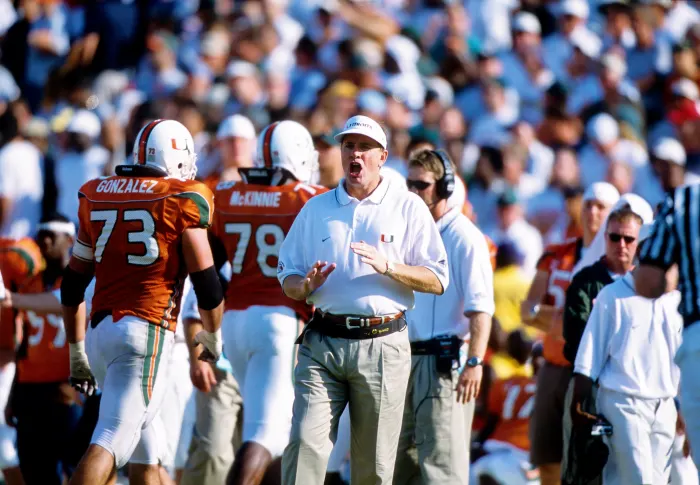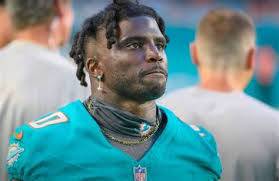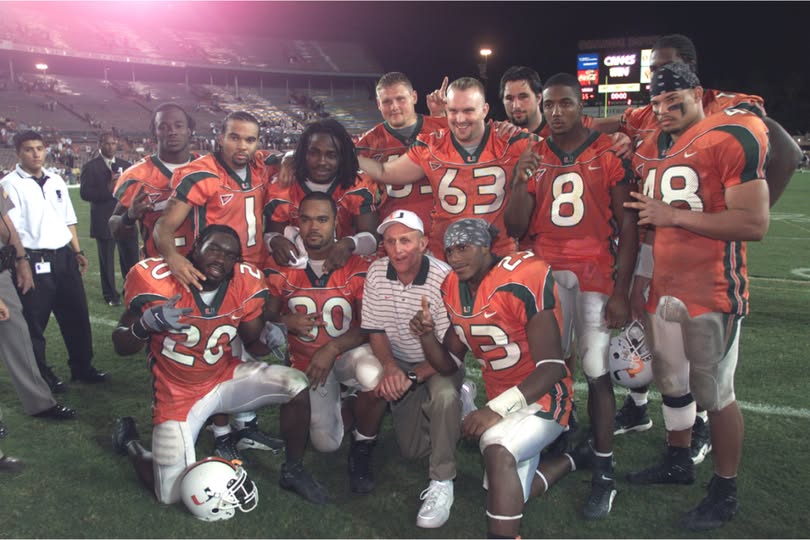In the ever-evolving landscape of college sports, program rankings and legacy discussions are constant points of debate among fans, analysts, and insiders alike. When The Athletic recently released its ranking of the top college football programs of the 21st century, one placement caught widespread attention and stirred conversation: the University of Miami’s position on the list. Miami, a historic powerhouse with a decorated past, landed in a spot that many considered controversial, prompting spirited debate about what truly defines greatness in this modern era of college football.
Miami Hurricanes football has long been synonymous with excellence and swagger. The program’s dominance in the 1980s and early 1990s, where it won five national championships, cemented its place among the sport’s elite. The Hurricanes played with an unapologetic confidence and style that transcended football, influencing culture far beyond the gridiron. Names like Jim Kelly, Michael Irvin, Warren Sapp, and Ed Reed are etched into football lore, and their era still serves as a benchmark for excellence. However, The Athletic’s ranking did not focus on Miami’s historical glory days but rather on the program’s performance specifically since 2000—a period that, for the Hurricanes, has been marked by a significant decline in sustained success.
Since the turn of the millennium, Miami has struggled to replicate its previous dominance. Though the Hurricanes captured a national title in 2001, it has been an uphill battle since then to remain among the top programs consistently. Various coaching changes, recruiting missteps, and the increased competition within the Atlantic Coast Conference (ACC) have challenged Miami’s ability to compete at the highest levels year in and year out. The Athletic’s ranking, which weighed factors such as win-loss records, conference titles, College Football Playoff appearances, and recruiting rankings over the past two decades, placed Miami notably lower than many fans and alumni would have hoped.
The controversy largely stems from the perception that Miami’s overall talent level, tradition, and sporadic flashes of brilliance should have merited a higher spot. For many, the Hurricanes remain a program with unparalleled potential, and some argued that The Athletic’s methodology undervalued Miami’s impact, particularly in producing NFL talent and maintaining a national brand. Critics pointed out that despite the ups and downs, Miami has consistently produced first-round NFL draft picks and Pro Bowl players, underscoring the program’s ability to develop elite athletes. Furthermore, Miami’s passionate fanbase and the cultural significance of “The U” have helped maintain the program’s relevance in a crowded college football landscape.
Yet, defenders of The Athletic’s ranking emphasize that the list was grounded in measurable contemporary success rather than historical legacy or potential. In the 21st century, college football has transformed in ways that demand sustained excellence to be considered among the best programs. The rise of programs like Alabama, Clemson, Ohio State, and LSU—who have combined to dominate conference championships, playoff berths, and national titles—has reshaped expectations for elite status. Miami’s inconsistency, punctuated by seasons of underperformance, inevitably affected its standing.
Looking closer at the numbers provides clarity on why Miami was placed where it was. After winning the national championship in 2001, the Hurricanes entered a period of turbulence. Coaching instability was a recurring theme. From Butch Davis to Larry Coker, and later Al Golden and Mark Richt, Miami’s leadership faced intense scrutiny and criticism. Several coaching tenures ended prematurely due to unmet expectations or NCAA sanctions, which disrupted continuity and momentum. The NCAA sanctions, particularly those related to the Nevin Shapiro scandal, tarnished the program’s reputation and hindered recruiting efforts. The fallout from these violations extended beyond the field, affecting public perception and internal culture.
Recruiting, once Miami’s greatest strength, also suffered during this era. The Hurricanes historically boasted some of the nation’s top recruiting classes, especially in talent-rich South Florida. However, increased competition from Florida State, Florida, and programs outside the region challenged Miami’s ability to consistently secure the elite prospects needed to maintain national prominence. While Miami has had standout recruiting classes even in recent years, they have often lacked the depth and consistency required to sustain championship runs.
On the field, Miami’s performance reflected these challenges. The Hurricanes have made several bowl game appearances but have not consistently been in the playoff conversation. Their best years in the 21st century—such as the 2001 national championship and the 2017 ACC Coastal Division title—stand out as bright spots but are interspersed with seasons of mediocrity or worse. In the fiercely competitive ACC, Miami often found itself battling for relevance rather than dominance. This inconsistency in results was a critical factor in The Athletic’s ranking formula, which favors teams demonstrating sustained success over short bursts of achievement.
The cultural and emotional attachment to Miami’s legacy cannot be understated, however. The Hurricanes’ swagger and identity—fueled by their iconic “U” logo and the fierce pride of South Florida—continue to make them a formidable presence in college football’s narrative. Miami’s tradition of producing NFL stars remains unparalleled. Players like Ray Lewis, Sean Taylor, Devin Hester, and Andre Johnson all passed through Miami’s ranks, leaving lasting marks on the professional game. This pipeline of elite talent highlights the program’s continued relevance in the broader football ecosystem, even if the team itself has not always matched that level of success on the field.
Moreover, Miami’s fanbase remains one of the most passionate and loyal in college sports. Hurricanes supporters endured the lean years with hope and resilience, eager for the program to return to its rightful place atop college football. The city of Miami itself is a vibrant, diverse, and football-crazed community that embraces the Hurricanes as a symbol of local pride and cultural identity. This intangible element—pride, passion, and history—often fuels the emotional argument for Miami’s inclusion among the top programs of the 21st century, even if the numbers paint a different picture.
From a strategic standpoint, Miami has made moves in recent years aimed at revitalizing the program. Investments in facilities, coaching hires, and recruiting initiatives demonstrate a commitment to returning the Hurricanes to national prominence. The hiring of Mario Cristobal as head coach brought optimism, as he had previous success building competitive teams in the region. Miami’s recent recruiting classes have been promising, suggesting the program is positioning itself for a resurgence. However, college football’s landscape is more competitive than ever, and regaining sustained elite status will require not only talent acquisition but also consistency, stability, and discipline.
The Athletic’s ranking, controversial as it may be, reflects the reality that college football has evolved into a sport where past glories, while respected, do not guarantee future success or high standing. The 21st century has been defined by programs that have adapted to changes in recruiting dynamics, NIL (Name, Image, Likeness) rules, and playoff expansion while maintaining excellence on the field. Miami, for all its tradition and sporadic success, has not yet fully made that transition. The ranking serves as both a reflection of past performance and a challenge for Miami to reclaim its place among the nation’s elite.
Looking ahead, Miami’s trajectory will be closely watched by fans and analysts. Will the Hurricanes leverage their rich history and regional advantages to build a new era of dominance? Can they overcome the setbacks of the last two decades and reestablish themselves as perennial championship contenders? The answers to these questions will shape not only Miami’s future rankings but also its identity in the college football world.
In the broader context, Miami’s ranking in The Athletic’s list highlights an ongoing conversation about how greatness is measured in college sports today. Is it sustained on-field success, national championships, or NFL talent production? Or does the cultural impact and historical significance carry equal weight? Miami’s case suggests the answer is complicated and multi-faceted, blending statistics with legacy and passion.
For now, the University of Miami remains a storied program with a complicated 21st-century story. The Athletic’s ranking, controversial as it may be, underscores the program’s challenges and sets a clear benchmark for what the Hurricanes must accomplish to reclaim their place among college football’s best. Whether Miami fans view the placement as a call to action or an underappreciation of their program’s unique identity, one thing is certain: The Hurricanes will continue to fight to prove that their legacy is far from finished.



